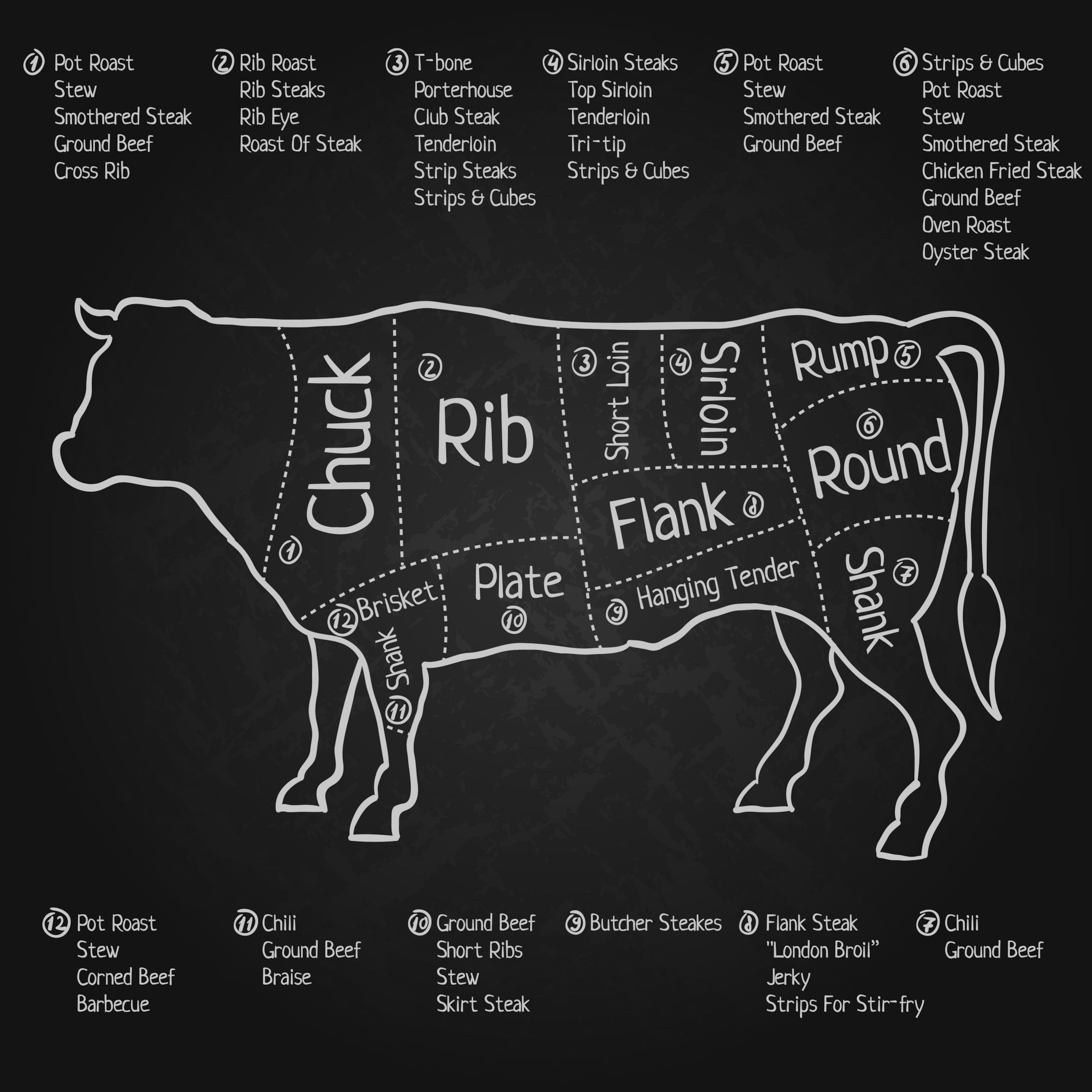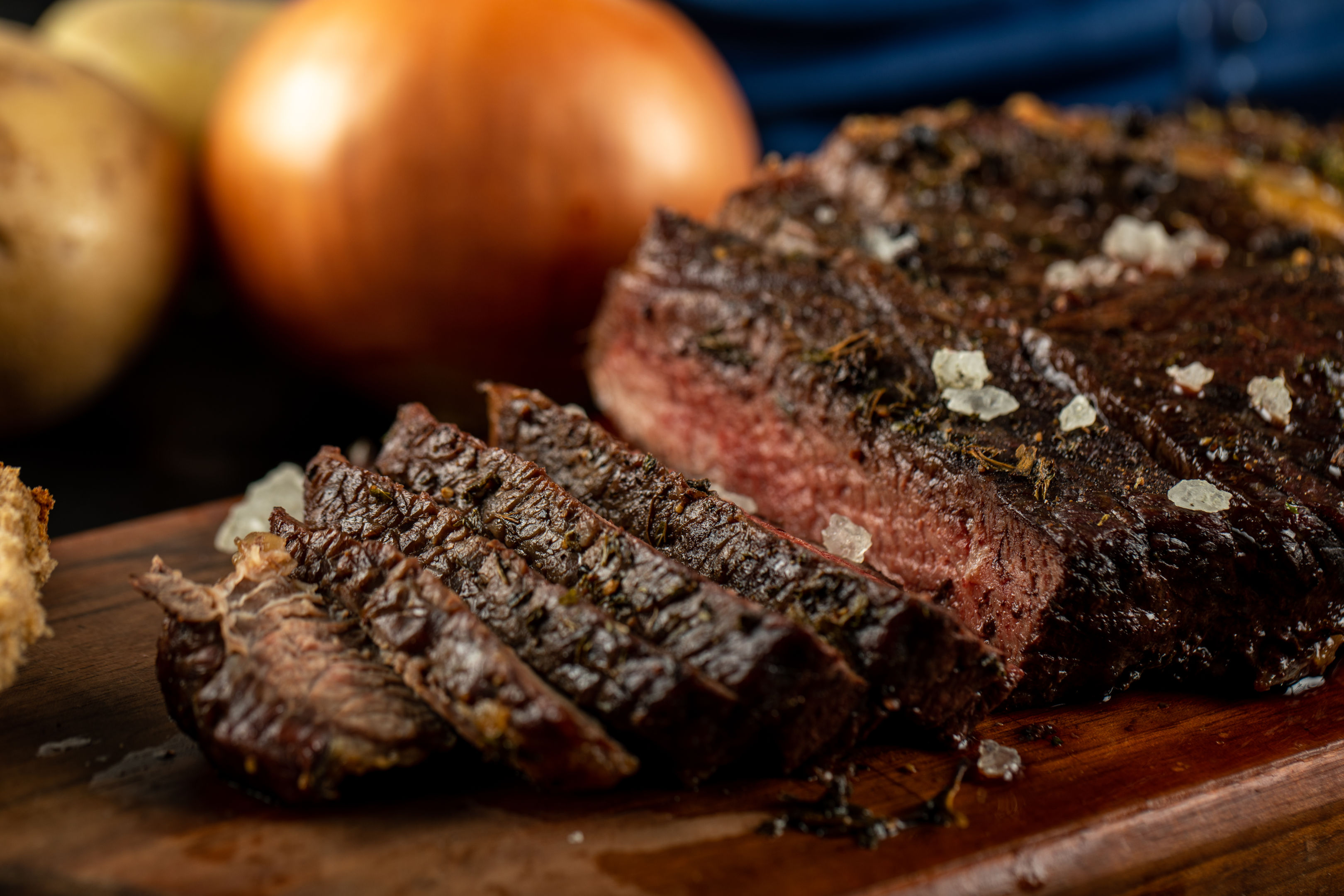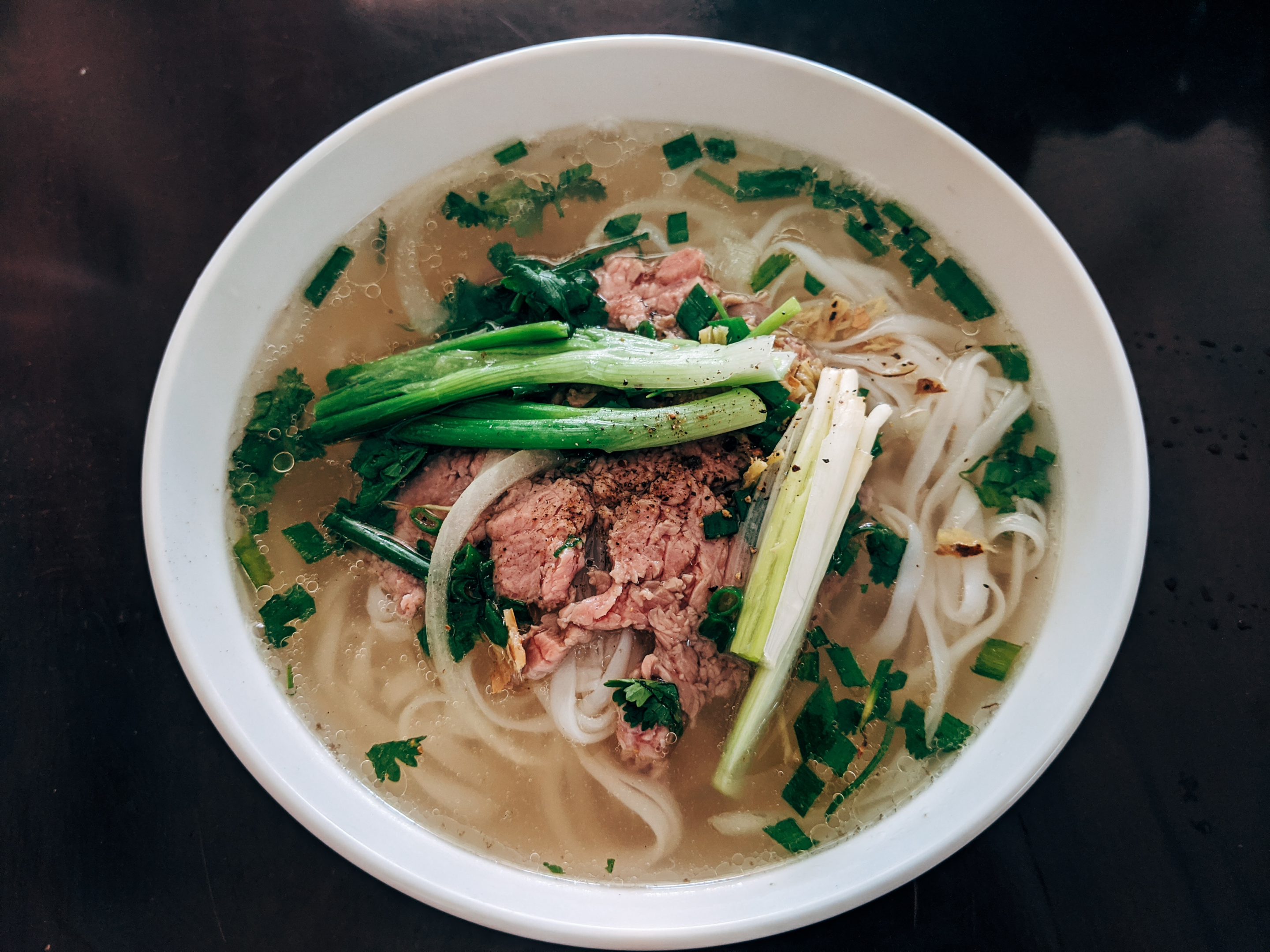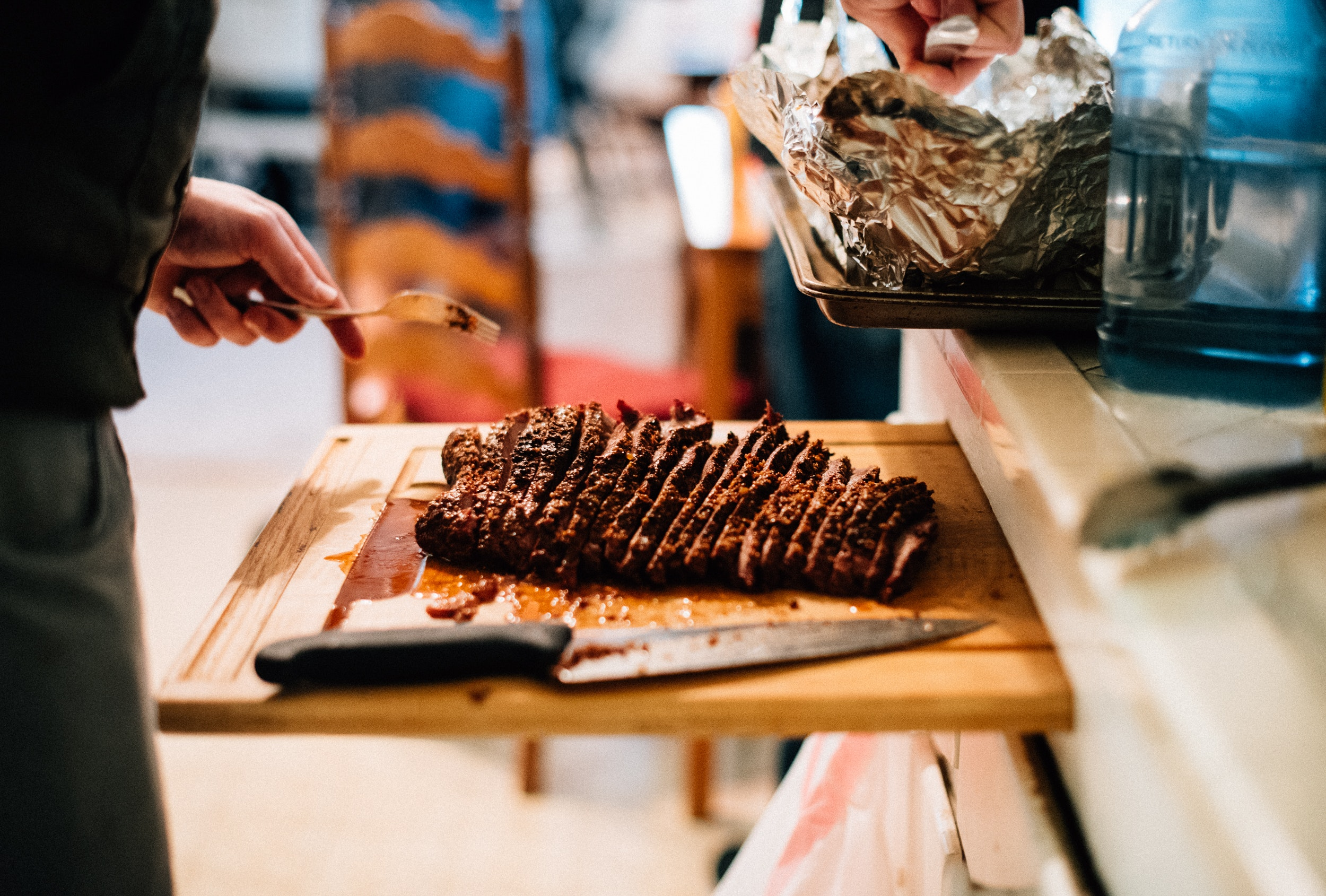Beef Brisket Recipes
Beef brisket is an economical and versatile cut of meat, which has been successfully adopted in various cuisines worldwide, from the smoky barbecues of South America to the rich stews of Asian cuisines and some all-time European favourites.
Our foodie journey of beef brisket recipes will not only tantalise your taste buds but also showcase the remarkable ways in which a single cut of meat can be utilised to great success and be a bridge between cultures. So grab your apron, sharpen your knives and join us as we embark on this gastronomic voyage, celebrating the versatility of beef brisket across the globe.
What Makes Scotch Beef Special?
Scotch beef is a name that resonates with culinary excellence, and is celebrated worldwide for its outstanding quality and unparalleled flavour. It graces the plates of gourmet restaurants and the tables of households that relish its unique taste and outstanding quality. But what sets it apart?
1. Born & Reared in Scotland:
The very first hallmark of authenticity is its origin. To carry the world-renowned Scotch brand, the beef must be born and reared within Scottish borders. This not only ensures traceability but also guarantees that the beef has been subjected to Scotland's red meat industry's unique environmental and rearing conditions.
2. Free Range & Organic:
One of the secrets behind the exquisite taste and texture of Scotch beef lies in the natural diet of the animals. The cattle graze freely on the verdant pastures, enriched by frequent rainfall and a cool climate, ensuring a diet that is as organic as it gets.
3. Sustainability & Ethical Practices:
Scotland prides itself on its sustainable farming practices. In a world increasingly conscious about environmental impact, Scotch beef stands out. From low-intensity farming to renewable energy usage in farms, the process is green at every step. Moreover, the welfare of the cattle is paramount. Ethical rearing practices ensure the animals are treated with the utmost respect and care.
4. Rich Flavour Profile:
The combination of natural feeding, the unique Scottish climate and traditional rearing methods culminate in a beef that boasts a rich flavour profile and unparalleled tenderness.

In the world of beef, Scotch beef stands as a testament to the synergy between nature, tradition and stringent quality standards. Cooking with premium quality Scotch beef not only guarantees an indulgent culinary experience but also a glimpse into Scotland's rich heritage and its unwavering commitment to excellence.
Which Cut of Beef is Brisket?
Beef brisket is a cut of meat from the breast or lower chest of the animal. As cattle do not have collar bones, these brisket muscles support about 60% of the body weight of standing or moving cattle. This requires a significant amount of connective tissue, so the resulting meat must be cooked correctly to tenderise it. Beef brisket is often slow-cooked to break down those tissues and create a fork-tender result. Beef brisket is typically used for making corned beef, barbecue, braised dishes and pastrami.

What is Beef Brisket Ideal For?
Due to its unique composition, beef brisket requires specific cooking methods to achieve the best results. Here's what beef brisket is ideal for:
- Slow Cooking: Given its tough nature, brisket benefits from low and slow cooking methods that break down its connective tissues, making it tender and succulent.
- Barbecue: Brisket is a staple in many barbecuing traditions, especially in South America. A smoked beef brisket, when done right, results in a flavourful crust called 'bark' on the outside and tender, juicy meat inside.
- Braising: Brisket is often braised with liquids such as wine, beer or broth, often combined with herbs and vegetables. This method makes it juicy and fall apart tender.
- Corned Beef: Brisket is the cut used to make corned beef. It is cured in a seasoned brine, then boiled or simmered with spices until tender. In the US, it is a St. Patrick's Day favourite when paired with cabbage.
- Pastrami: When brisket is cured and then smoked and steamed, it turns into pastrami. This Italian deli favourite is often sliced thin and served on rye bread with mustard.
- Stews and Casseroles: Given its rich flavour, brisket can be used in hearty stews or casseroles, where it is slow-cooked until tender and combined with a variety of vegetables and spices.
- Slow Cooker Beef Brisket & Crock Pot Meals: Due to the extended cooking times that brisket requires, it is a great candidate for slow cooker recipes, allowing it to cook unattended for hours and soak up flavours from sauces or marinades.
- Pot Roast: In some regions, brisket is used as a pot roast, seasoned, seared and then slow-cooked with vegetables in a pot or oven.

To achieve the best results with brisket, it is essential to allow adequate cooking time to break down the tough connective tissues, making the meat tender and flavourful. Whether smoked, braised, or slow-cooked, when prepared correctly, brisket offers a savoury and satisfying eating experience. Have you got a favourite beef brisket recipe?
The Versatility of Beef Brisket
Beef brisket is loved and celebrated worldwide, with each region adapting it to suit its unique culinary traditions. This versatile cut is transformed into diverse dishes from showstopper beef dishes to leftover brisket meals. Here's a whistlestop tour of beef brisket recipes from around the world:
- United States:
- Smoked Brisket: In places like Texas, brisket is slow-smoked for hours to create a tender piece of meat with a flavourful crust called 'bark'. It is often sliced and served with BBQ sauce and side dishes like coleslaw and beans.
- Corned Beef: Particularly popular in Jewish delis and around St. Patrick's Day, corned beef is brisket that has been cured in a seasoned brine and then boiled or simmered.
- Pastrami: Especially popular in places like New York, this is brisket that has been cured, smoked and then steamed.
- United Kingdom:
- Salt Beef: Similar to corned beef, salt beef is brisket that has been cured in a brine and then boiled. It is often served in sandwiches with pickles and mustard.
- France:
- Pot-au-Feu: This is a traditional French stew made with brisket, root vegetables, garlic powder and spices, resulting in a rich and flavorful broth.
- Korea:
- Galbi-jjim: A delicious and hearty Korean stew made with brisket, soy sauce, sesame oil, and various vegetables and spices. The meat becomes incredibly tender and flavourful.
- China:
- Brisket Stew with Daikon: A popular Cantonese dish where brisket is slow-cooked with daikon radish, resulting in a comforting stew.
- Noodle Soups: Brisket is often used in Chinese noodle soups, especially in Hong Kong's beef noodle shops, combining flavourful broths and various noodles.
- Jewish Cuisine:
- Tzimmes: Brisket is used in this traditional Ashkenazi Jewish dish, which combines meat with sweet ingredients like carrots, dried fruits, and honey, often served during Rosh Hashanah.
- Vietnam:
- Pho: Vietnam's iconic noodle soup often features thin slices of brisket alongside aromatic broth, rice noodles and herbs.

This array of brisket-based dishes showcases the global appeal of this cut. Its rich flavour and adaptability to slow-cooking methods make it a preferred choice for many comfort dishes across the globe. Whether stewed, smoked, boiled, or braised, brisket's popularity in global cuisines is a testament to its universal appeal.
Tips on How to Cook Beef Brisket
Beef brisket is delicious but it requires specific cooking methods to achieve the best results due to its dense connective tissues. Here's our quick guide to cooking brisket to perfection:
- Choose the Right Cut: Look for a brisket that has a good amount of marbling. This fat will melt as the brisket cooks, ensuring a moist and flavourful result. If you cannot get your hands on a brisket then the best substitute for it would be a chuck beef roast.
- Season Generously: Brisket is a thick cut of meat, so don't be shy with your seasonings. Apply a generous rub of your choice, whether it's a simple mix of salt and pepper, brown sugar, onion powder, paprika or a more complex combination of spices. Allow the seasoned brisket to sit, ideally overnight in the fridge, for the flavours to penetrate.
- Low and Slow is the Way to Go: The secret to tender brisket is cooking it at a low temperature for an extended period. This approach allows the connective tissues to break down without drying out the meat.
- Maintain Moisture: Use a drip pan filled with water or broth beneath the brisket if cooking on a BBQ or smoker. This will keep the environment humid, helping the meat retain its moisture. When roasting or braising, ensure the brisket is partially submerged in liquid and covered with a lid or foil.
- Fat Facing Up: When roasting or smoking, position the brisket with the layer of fat facing up. As the fat renders, it will baste the meat, contributing to a juicier brisket.
- Consider Braising: Braising (cooking slowly in a small amount of liquid) is a fantastic method for brisket. The combination of moist heat and long cooking time makes the meat exceptionally tender.
- Use a Meat Thermometer: To ensure your brisket is cooked to perfection, use a meat thermometer. For a tender result, aim for an internal temperature of around 200°F (93°C).
- Let it Rest: After cooking, let the brisket rest for at least 20 minutes to an hour, depending on the size. This allows the juices to redistribute throughout the meat, ensuring each slice is moist and tender.
- Slice Against the Grain: When you are ready to serve, make sure to slice the brisket against the grain. This shortens the meat fibres, making each slice more tender.
- Save the Juices: Whether you have roasted, smoked, or braised your brisket, you will end up with flavourful juices. Consider making a sauce or rich gravy from these drippings to accompany your meat.

By following these tips, you will be on your way to serving a beef brisket that is tender and sure to impress. Whether it is for a special occasion or a comforting family meal, perfectly tender brisket prepared with care is a real treat.
Where Can I Find Scotch Beef Near Me?
If you are looking for premium-quality beef for your Sunday roast or your next BBQ, we've got you covered!
With our user-friendly map, you can now find premium Scotch Beef quickly, near where you are. Just type in your postcode, and the map will guide you to your closest supplier.
Supporting Scottish Farmers
When you choose to cook with Scotch meat, you are also supporting Scotland's dedicated farmers, whose passion for rearing animals goes back generations. It is a lifestyle and a commitment steeped in deep-rooted traditions, sustainable farming and whole-chain assurance.
What's The Scotch Difference?
Let us take you on a journey into what makes Scotch Beef, Scotch Lamb and Specially Selected Pork so special, and how we produce such high-quality meat renowned and enjoyed worldwide.


- © MakeitScotch 2025
- Cookies
- Privacy
- Terms of Use
Site by Art Department
